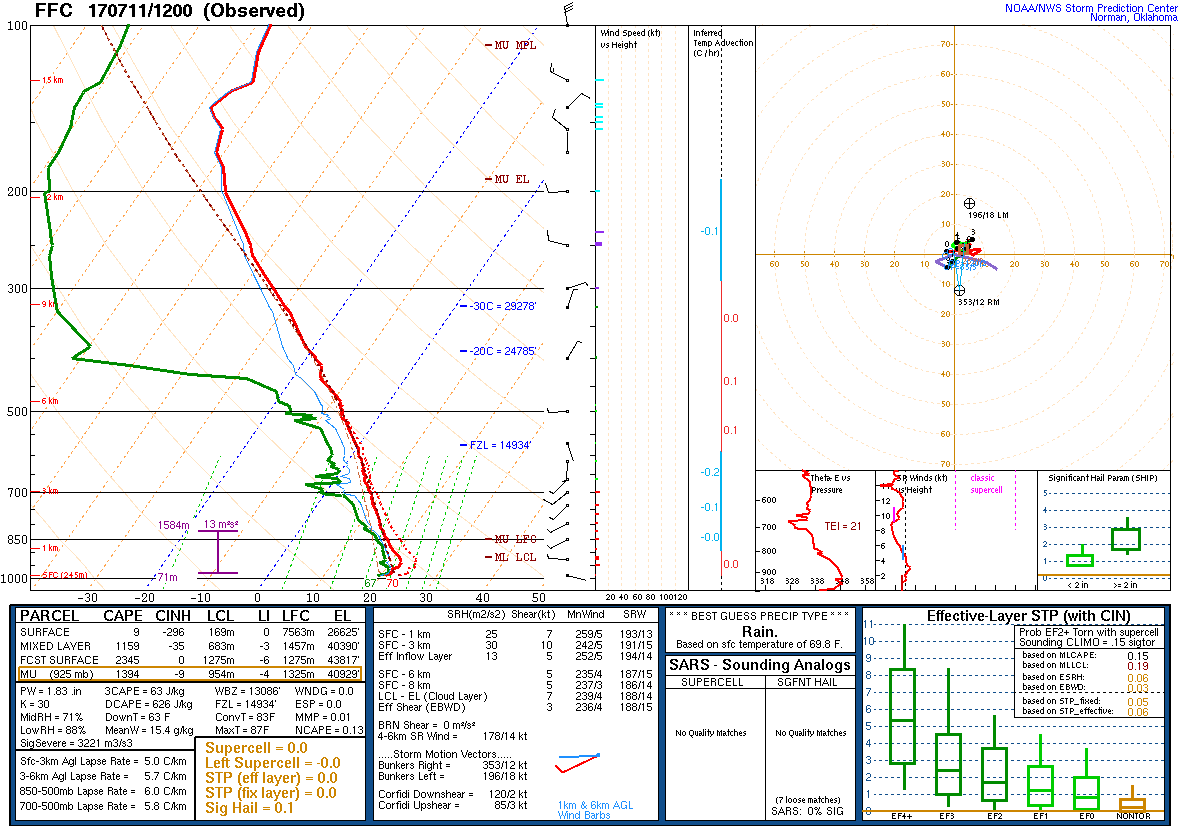Advantage of 1-minute imagery for the evolution of rapidly evolving low clouds
The GOES-16 data posted on this page are preliminary, non-operational data and are undergoing testing. Users bear all responsibility for inspecting the data prior to use and for the manner in which the data are utilized.
We begin by looking at the GOES-16 visible (0.64 micron) loop on the morning of 11 July 2017 at 5 minute temporal resolution:
Notice the low-level clouds in southern Georgia extending northeastward towards coastal South Carolina that appear to flicker since they are rapidly evolving.
The GOES-16 IR (10.35 micron) loop shows a similar evolution:
A portion of this scene was captured by the mesoscale sector so that we may view the imagery at 1 minute temporal resolution:
Rather than the flickering effect we saw at 5 minute temporal resolution, we instead see rather rapid evolution of clouds developing / dissipating much more smoothly.
The environment is characterized by very light winds throughout the troposphere, along with high relative humidity through much of the low to mid levels:
How deep do these clouds extend in the vertical? We can help answer this question by looking at the 3 GOES-16 water vapor bands (at 5 minute temporal resolution), and we will also include the Air Mass RGB product:
The rapidly evolving low-level clouds are evident in the low-level water vapor band (7.34 micron). At 6.9 microns (mid-level water vapor band) we still see some of those features, but not as clearly. Note that we do see numerous gravity waves, which may be playing a role in the rapidly evolving low-level clouds. As expected, the low-level clouds do not appear in the 6.19 micron (upper-level water vapor band), however gravity waves are still observed.

